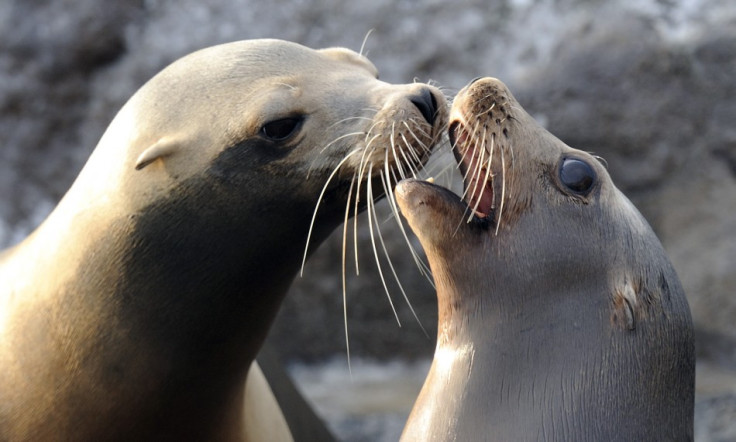California sea lion strandings down because warming coast has already killed pups

Fewer sea lion pups are being stranded along California's Pacific Coast compared with last year because higher sea temperatures and dwindling fish stocks are killing most of the pups.
Starvation is so rampant among the nursing pups as their mothers search for food in the warming coastal waters that thousands have died on their birth islands before they have had a chance to strike out on their own, reports Vice.
"There are a lot more dead. We haven't ever seen anything like this," said Sharon Melin, wildlife biologist of the Alaska Fisheries Science Center of the National Oceanic and Atmospheric Association (NOAA) in Seattle, which has tracked the pups on their island rookeries since 1979.
"What's really disturbing is that the pups are still alive," Melin told Vice. "They're racks of bones working so hard to survive and trying to suckle from mothers that aren't theirs."
Birth rates are also down because hungry mothers are not able to sustain their pregnancies, said Melin.
Stranding stories, like the one about a pup found recently huddled in a California diner, make for endearing media stories, but they are a sign of a species under stress.
Now the deaths are marking a troubling new low for the sea lion population as fish travel far from shore to escape the warming coastal waters exacerbated by El Nino.
As of 22 February, 375 pups were found stranded, still above the average 160 for the first two months of the year, but down significantly from last year, according to the latest statistics from NOAA.
The pups, who are born in June and nurse for 10 months, have not gained any weight since September 2015 because their mothers must hunt long days in the ocean for vanishing fish, leaving many of the pups to starve on the Channel Islands off Santa Barbara, according to Melin.
The sea lions' trouble is not confined to California. Officials in Chile recently reported that the bodies of hundreds of sea lions — most of them newborns — washed up on shore in late 2015 and the first two months of 2016.
"This is happening along the entire coast of northern Chile and we're getting reports that it's also happening in Peru, " researcher Carlos Guerra-Correa told CNN. "We could be talking about hundreds of sea lions washing up ashore dead in the entire region."
The same problem killing California pups — starvation — is killing the South American sea lion, according to Guerra-Correa, because warming waters and over-fishing is destroying their mothers' food source.
"Starvation is primarily affecting female sea lions in the latter stages of pregnancy. That's why their babies are dying at birth or being miscarried," said Guerra-Correa, director of the Regional Center for Environmental Studies and Education at Antofagasta University.
Melin predicts the number of California strandings will pick up in later spring as the remaining surviving pups try to make it on their own. But they will be so weak and underweight that they'll have little chance of staying alive, she warns.
© Copyright IBTimes 2025. All rights reserved.






















